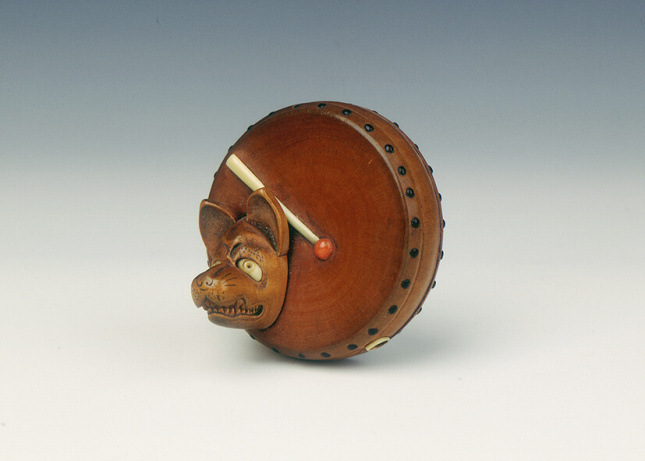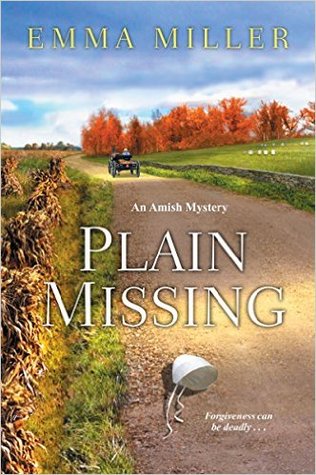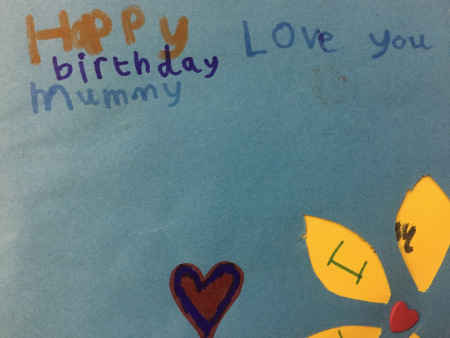
Click to learn more at Goodreads
Years ago, I saw rave reviews for this debut novel, The Darkness That Comes Before by R. Scott Bakker. Each review highlighted the book’s departure from the standard western European setting for an epic fantasy. Based on my reading at the time, that was enough to sell me. I read it back when I lived in the ‘burbs of Detroit, and I enjoyed it. But due to life events, I didn’t continue on with the series. The Darkness That Comes Before (TDTCB) made enough of an impression that it survived the move and every subsequent donation to the local library. Seeing this novel on the shelf, I wondered if it was worth a reread but didn’t follow through. If I saw a review or article about it, I’d read the essay. Opinion is very binary; TDTCB is either loved or hated, with few people in between. Adam Whitehead on his blog the Wertzone has created a series called the History of Eärwa, which is excellent and worth your time, that piqued my interest about starting a reread. Patrick St. Denis’ review of the Unholy Consult on Pat’s Fantasy Hotlist was the final push that got me started. Before opening to the first page, I wondered if I’d make it to the finish.
This paperback tallies up at six hundred pages, and I’m a slow, slow reader. A book of this size will take me at least a month, but this time around it took me just over two weeks. TDTCB is excellent, and I love it. But I’m conflicted about that love. Normally, in my reviews, I like to put a TL;DR summary for the book, but I’m not going to do that here due to those conflicted feelings. Instead, the complexity of the story will require a nuanced review that should not be broken down into a couple of sentences. This is not a book – not a series – that should be approached lightly. It has depth; it has horror; it has depravity. Mostly, the author succeeds in creating a fantastic book, but in the ways that he fails, he fails spectacularly.
From the publisher:
The first book in the Prince of Nothing Trilogy.
Strikingly original in its conception, ambitious in scope, with characters engrossingly and vividly drawn, the first book in R. Scott Bakker’s Prince of Nothing series creates a remarkable world from whole cloth-its language and classes of people, its cities, religions, mysteries, taboos, and rituals-the kind of all-embracing universe Tolkien and Herbert created unforgettably in the epic fantasies The Lord of the Rings and Dune. It’s a world scarred by an apocalyptic past, evoking a time both two thousand years past and two thousand years into the future, as untold thousands gather for a crusade. Among them, two men and two women are ensnared by a mysterious traveler, Anasurimbor Kellhus—part warrior, part philosopher, part sorcerous, charismatic presence—from lands long thought dead. The Darkness That Comes Before is a history of this great holy war, and like all histories, the survivors write its conclusion.
The easiest descriptor comes from the publisher, “Strikingly original in its conception, ambitious in scope, with characters engrossingly and vividly drawn…” It is all of these. Since the original publication, fantasy has enjoyed imaginative changes of scenery. From Saladin Ahmed’s Throne of the Crescent Moon to N.K. Jemisin’s The Fifth Season to Kameron Hurley’s God’s War,1 the western European setting no longer wholly owns the fantasy field, and this is a good thing. Bakker’s setting still holds as creative and original even amongst these other diverse books. It is Mediterranean and Near Eastern. The inspiration for this series is the crusades. I’ve seen articles debating whether it’s the first or third crusade, but not being a history buff, I don’t know and wouldn’t be able to tell the difference. The main story has a Roman or Byzantine feel to me. There are aspects of northern Europeans as well, but the main story arc is not there. One civilization seems to be based on the Huns, and the religion of the main arc seems to mix Catholicism with a pantheistic religion. But these are not just dressed up representations of other cultures. Bakker may have started with these ideas, but he has created wholly his own secondary world. It is engaging and challenging. It can be frustrating but never shallow. Similar to Steven Erikson’s the Malazan Book of the Fallen, the reader is dropped in media res and expected to just read and find out. There is no hand holding, no neat explanation; just immerse yourself and trust that the author will make things clear. While this does make for a challenging read, it is rewarding as the book develops.
The writing is excellent. It is not flowery nor utilitarian; the best description that I’ve seen is that it is elevated. It is the type of writing that is clear, excellent, and, yet, does not call attention to itself. The pace varies the right amount to keep me hooked without being burned out, and even with fast reading, enough information is conveyed in a way that I didn’t have to go back to understand. Only when I enjoy the craft of the writing or the thought, do I go back and reread a sentence or paragraph. There is a lot of philosophy in this novel, which might deter some. I feel that it is excellently balanced between too much and not enough for goals of the story. Also, the philosophy challenged; it’s not too heavy that I couldn’t understand; nor was it too condescending. This book sets the standard – for me – on how dramatic SFF novels should handle philosophical content.2
Going into the novel, my memory focused on Anasûrimbor Kellhus. I remembered him as the main character, but he doesn’t have as large of a part as I remember. He is present in the prologue and reappears in the last third of the novel. Instead, this book focuses on Drusas Achamian, Cnaiür urs Skiotha, Esmenet, and Ikurei Xerius to build the world. There are other viewpoints, but these are the main ones. Drusas is a fascinating character. As an older Mandate Schoolman, he fills the magic-user position in this fantasy. In this world, that means he’s a blasphemer and to be shunned. He’s also a spy for his school, which even among the shunned is considered full of madmen.3 Cnaiür is a Scylvendi warlord, a.k.a. the fighter in this party. The Scylvendi are a nomadic, warlike civilization whose god is dead; and they view war as holy. Cnaiür is an important viewpoint for reasons of balance. He, alone, seems immune to Kellhus’s Dûnyain training. One of the only women, Esmenet, is a whore and lover of Achamian. Since Schoolmen aren’t allowed wives, Achamian’s love isn’t enough to keep him from leaving Esmenet. More, much more, on Esmenet later in this review. Ikurei Xerius is the emperor of the Nansur Empire, who is at once daft and cunning. Xerius is trying to take control of the Holy War for his own ends. He seeks the return of lands lost to the ‘heathen’ and sees the gathering Holy War as his opportunity. He is frustrating, and it is unclear how much of his cunning is truly his own. One character hangs over the novel without getting much page time, Maithanet. He is the holy Shriah of the Inrithi religion, which, I guess, equates him to the Catholic pope. We don’t learn much about him, but the characters speculate a lot with little confirmation. I look forward to learning more about him. Of these, Drusas is the best character far and away because of his lack of certainty, but during this reread, Cnaiür grew on me. For the berserker/barbarian archetype, he is thoughtful, conflicted, and intelligent. His cynicism is earned and serves him well. Like last time, I feel bad for Esmenet. She deserves better than the treatment she gets.
While there is a plot, it’s better to think of this entire novel as the prologue, or maybe just introduction, to the larger story. To be clear, it’s not an origin story; it’s an “Avenger’s Assemble” type tale, and it’s not just the heroes gathering. TDTCB is the launching point for nations marching to war. There is some resolution by the end of the novel but very, very little. Despite this, the book feels complete at the end. When I reached the final page, it felt like an ending not a cliffhanger; it was not all buildup with no resolution. I’m unsure of how Mr. Bakker pulled this off, but he did. At the end of this re-read, the mysteries set up drove me to the second book. The Holy War marches, and I’m along for the journey.
While I enjoyed the book, I am aware that there are problems here. The issues that I experienced in my first read were stronger and more prominent this time. In short, TDTCB is a problematic book. Very problematic. While I think one can be a fan of problematic things4, it’s important to acknowledge the issues. For starters, I would not recommend this book to women. The female characters exist only as sexual pieces in the author’s game. While I think Esmi is a good character, she only exists for the men, not as a person. She is given a backstory about a dead daughter to add depth, but it didn’t work for me. She doesn’t even have a last name. Sexual violence is very, very present in this story. There is entirely too much of it in my opinion. Some have defended its prevalence by saying that Mr. Bakker had a reason for it all, which may be true. Others have defended it by saying that’s how things were in the time he’s approximating, which is not an excuse because fiction is constructed. In storytelling, the author has complete control of what goes into a narrative. While the timeline the author is approximating may be awful, the author does not have to play out horrific assaults on the page. It is the author’s choice to put that there; so, the author means for it to have some effect. In this book, I do not understand the author’s choice. Whatever he was going for didn’t come through. This failure makes the sexual violence stand out instead of being a natural part of the story.
The above is a specific part of the overall problem; this story doesn’t treat women well. Whores, wives, mothers, or priestesses are the only occupation for women in this world. This wouldn’t be terrible except that they don’t seem to have lives of their own. When Esmenet isn’t meant to be part of Achamian’s story, she’s just a prostitute. Most of what happens to her is because of Achamian’s purpose, not hers. She does have agency of a sort, but of the many, many male characters that we encounter, Esmenet has the major role among the three women we meet. Serwë exists simply as a victim of violence – physical and psychological, and the emperor’s mother exists only as a harlot. If I read correctly an incestuous harlot at that. Hell, the driving motivation for Kellhus is to find his father, but not once in the book does he ever think of his mother. Not once. Now, the story wouldn’t have been any better had he thought of his mother. What I’m saying is that Kellhus encompasses the story’s issues with women; it doesn’t consider them necessary.
Kellhus, as a character, is difficult for me. I love the idea of a secretive order of monks that learn control so much they are effectively more than human. However, I’m not sure Kellhus and his secretive order are more than human; they are teaching themselves to be sociopaths. The shortest path in effect is the abolition of morality. In TDTCB, Kellhus seems emotionless regarding everything except his father. “I don’t love my father, plainsman. I do not love. If his murder will allow my brethren to pursue their mission, then I will murder him.”4 The rest is just a game, just levers and pulleys to manipulate toward an end goal. Except the game pieces are human beings. Tossing away a life has no more meaning to Kellhus than walking over grass, and his emotional manipulation of people, in reality, would be categorized as abuse. In no way is he a hero, which was the trend at the time this was first published. Anti-heroes were, and in some circles still are, all the rage in “serious” fantasy. But in a way, he’s also a god. He is revered and reviled as such, and the majority of the characters fall easily under his sway. Cnaiür and Ikurei Conphas seem to be the only characters that do not worship Kellhus. He becomes the gravitational source that other characters begin to orbit, which is fine, but the other characters begin to fawn over him. This is continued and intensified in the second book. There is a reason for this fawning, but it exists in enough abundance that it’s noticeable and somewhat tiring.
Since philosophy is so integral to this book, the question of means versus ends will define whether Kellhus is heroic. Kant’s categorical imperative as applied to Kellhus means that the “Prince of Nothing” is not a hero because no one would want his manipulations and abuses to be the standard of human interaction. His mental abuse of Serwë is no better than Cnaiür’s physical abuse, and neither should be the universal law of romantic partnership. But as a combination of utilitarianism and Nietzsche’s philosophy, Kellhus can be a hero as long as the only morality is that ends justify the means. For Kellhus, the cause is positive if and only if the effect advances his mission. Therefore, in this sense, the loss of life, the psychological abuse, the manipulation are heroic because it brings him closer to Shimeh.
These questions are what make Kellhus a compelling but unlikable character. He is a protagonist that I will enjoy reading about without actually ever liking as a person. If you are not a person who can detach enough to view the murder of innocents as a stratagem, then Kellhus will, at a minimum, frustrate you.6
Based on whether to continue the series or not, the re-read succeeded because I jumped right into book two. I gave it a four stars on Goodreads, and on my personal scale, I would give it eight out of ten. This is an assured debut that is plagued by some large – and for some insurmountable – problems. Some will say that I discounted too much for the book’s issues, and some will say that I didn’t discount enough. To both I say, maybe. Others will say that I focused too much on the negatives, and to these people, I will respond with a quote. “…as a fan of problematic media, you need to respect the fact that others may be so upset or angered by media you love that they don’t want to engage with it at all.” 7 As a reviewer, I have to respect that some people are angry at this book, and they have a right to be. I am a fan of this very, very problematic thing to be sure, but this isn’t a book that I can recommend to women without a significant warning. While I enjoy it, I can easily see how it would upset and anger many, many people. If this is you, then right on. I respect your opinion. If you can read problematic things, then this book offers opportunities for a creative series. While re-reading is not something I engage in often, it paid off here.
Highly recommended with dire warnings
1. Check out these other excellent series.
2. Terry Pratchett will always be the best SFF philosopher for me. Mixing depth with humor is difficult, but he never failed. Mieville is another SFF philosopher that might tie with Bakker if I understood more political philosophy. That’s about my range for philosophy without a more in-depth interrogation of my own reading history.
3. Of course, it’s men only. To be fair to Bakker, he doesn’t say that women aren’t capable of sorcery. They may be, but the inherent sexism of the societies only allow men to be schooled in sorcery. Do these societies allow women to be schooled at all?
4. The following excellent essay expresses my thoughts on this subject way better than I ever could. I highly recommended reading and applying. How to be a Fan of Problematic Things by Rachael
5. Kellhus talking to Cnaiür, pg 358, Darkness that Comes Before
6. Based on past comments, I feel the need to note that I condone this stratagem. Nor do I think it is a good one, but detaching from that allows one to attempt to understand Kellhus, which may or may not be a good thing.
7. Rachael from socialjusticeleague.net
Advertisements Rate this:Share this:- More





